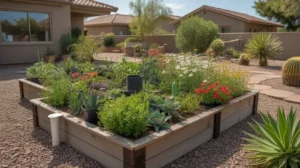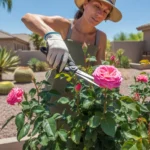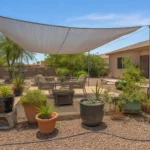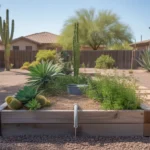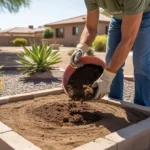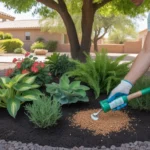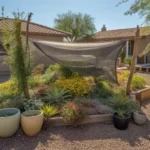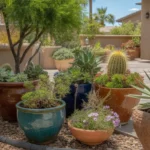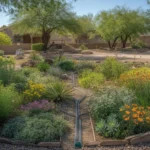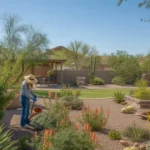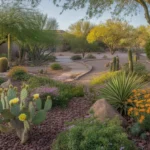Gardening in the arid climate of Arizona’s Southeast Valley presents unique challenges, from intense sun to limited water. But with the right techniques, you can still enjoy lush, productive gardens that defy the desert. One secret weapon? Wicking beds. These innovative raised beds deliver water directly to plant roots, enabling you to grow thriving gardens while conserving precious water resources. Let’s explore how to harness the power of wicking beds to transform your Arizona landscape.
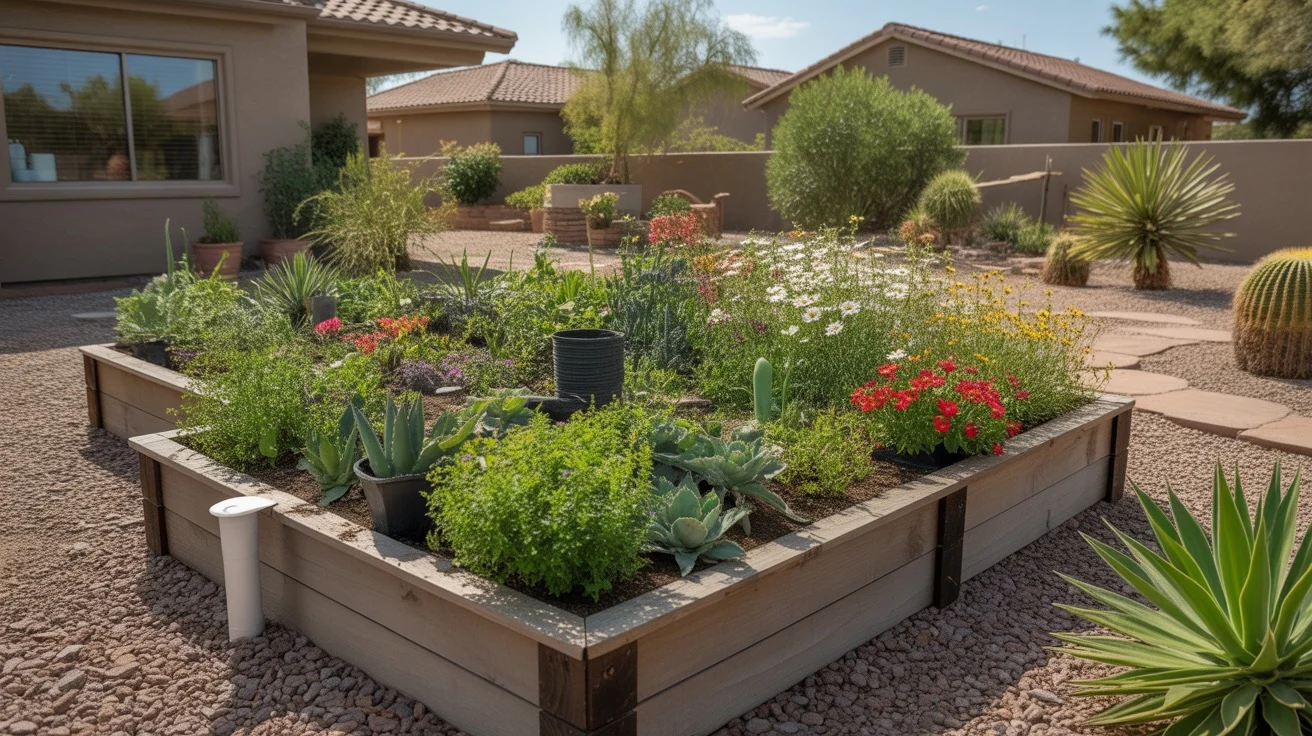
What Are Wicking Beds?
A wicking bed is a type of raised garden bed with a built-in water reservoir at the base. This reservoir “wicks” moisture upward into the soil, providing a steady water supply to plant roots. Wicking beds are essentially self-watering, as the soil draws up moisture as needed to maintain optimal growing conditions.
The key components of a wicking bed include:
- A waterproof liner to contain the reservoir
- A fill tube for adding water to the reservoir
- An overflow drain to prevent oversaturation
- A wicking medium like gravel or sand to draw water upward
- A barrier fabric to separate the soil from the reservoir
- A deep layer of quality potting mix for plant roots
When constructed properly, a wicking bed can go for weeks without needing additional water, even in Arizona’s intense heat. The closed system loses minimal moisture to evaporation, and delivers water directly to the root zone for maximum efficiency. It’s like having a hidden irrigation system within the bed itself.
Benefits of Wicking Beds in Arizona
Wicking beds offer numerous advantages for Arizona gardeners looking to create sustainable, productive gardens in a harsh growing environment:
- Water conservation: By delivering moisture directly to plant roots and minimizing evaporation, wicking beds can reduce water usage by up to 50% compared to traditional raised beds or in-ground gardens.
- Healthier plants: The consistent moisture encourages deep root growth and reduces stress on plants, leading to healthier, more productive gardens. Foliage stays lush even in intense heat.
- Less maintenance: Since the bed self-waters for weeks at a time, you spend less time dragging hoses or adjusting irrigation. Just keep an eye on the reservoir level and top off as needed.
- Improved soil health: Wicking beds prevent waterlogging and encourage beneficial microbial activity in the soil. The moist, aerated environment is perfect for plant roots.
- Versatility: Wicking beds can be adapted to any size or style, from small herb gardens to large vegetable beds. They even work well for perennials and small shrubs.
In the unforgiving Arizona climate, wicking beds provide an oasis for plants and a low-maintenance solution for gardeners. You can spend more time enjoying your garden and less time stressing over watering schedules.
Building a Wicking Bed
To construct your own wicking bed, you’ll need a few key materials:
- A raised bed frame at least 24″ deep
- Pond liner or other waterproof sheeting
- Perforated fill tube (PVC pipe works well)
- Overflow drain pipe
- Pea gravel, coarse sand, or other wicking material
- Geotextile fabric (to separate soil from reservoir)
- High-quality potting mix
Start by lining the inside of your raised bed with the pond liner, leaving enough excess to wrap over the top edges. Position your fill tube in one corner and your overflow pipe in the opposite corner, drilling holes for drainage. Add a layer of gravel or sand about 4-6″ deep for your wicking reservoir.
Lay your geotextile fabric barrier over the wicking medium, then fill the bed the rest of the way with potting mix. Wrap the pond liner over the top edge and secure. Fill the reservoir via the fill tube until water starts to drain from the overflow – this is your “full” point. Plant your garden and enjoy!
Choosing Plants for Arizona Wicking Beds
While wicking beds expand the possibilities of what you can grow in Arizona, it’s still best to choose plants well-adapted to the local climate. Some excellent options include:
- Herbs like rosemary, basil, and lavender
- Vegetables like tomatoes, peppers, eggplant, and squash
- Flowering plants like penstemons, angelita daisy, and desert marigold
- Succulents like agave, yucca, and desert milkweed
Experiment with different plant combinations to create a garden that is both beautiful and bountiful. With a wicking bed, you’ll be amazed at the variety of plants that can thrive in Arizona’s challenging conditions.
Maintaining Your Wicking Bed
While wicking beds are relatively low-maintenance, there are a few key tasks to keep them functioning optimally:
- Monitor the water level: Check the reservoir regularly and top off as needed, especially during hot spells. The frequency will depend on your bed size and plant selection.
- Flush the reservoir occasionally: Every few months, drain the reservoir completely and refill with fresh water to prevent salt and mineral buildup.
- Refresh the potting mix annually: At the end of each growing season, remove spent plants and top off with fresh potting mix to replenish nutrients and maintain good structure.
- Control pests and diseases: While the moist environment can deter some pests, stay vigilant for any signs of trouble and address issues promptly with organic controls.
With proper care, your Arizona wicking bed will provide years of abundant harvests and colorful blooms, all while conserving water and reducing maintenance. It’s a win-win for both you and the environment.
Join the Wicking Bed Revolution
As more Arizona gardeners discover the joys and benefits of wicking beds, it’s the perfect time to start your own. Whether you’re a seasoned green thumb or a desert gardening newbie, wicking beds make it possible to create the lush, productive garden of your dreams, no matter how intense the sun or scarce the rainfall.
By embracing this innovative raised bed design, you’ll not only be conserving water and growing healthier plants, but cultivating a more resilient, sustainable way of gardening in the desert. So roll up your sleeves, grab your tools, and start building your own desert oasis today – one wicking bed at a time.

